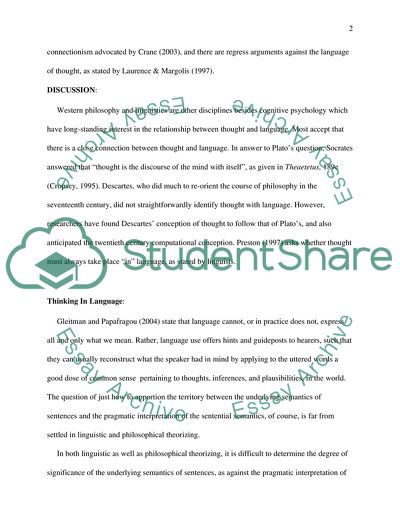Cite this document
(The Language of Thought Literature review Example | Topics and Well Written Essays - 2750 words, n.d.)
The Language of Thought Literature review Example | Topics and Well Written Essays - 2750 words. https://studentshare.org/psychology/1708176-is-fodor-right-that-the-nature-of-human-thought-requries-that-there-be-a-language-of-thought-that-is-not-ones-native-language
The Language of Thought Literature review Example | Topics and Well Written Essays - 2750 words. https://studentshare.org/psychology/1708176-is-fodor-right-that-the-nature-of-human-thought-requries-that-there-be-a-language-of-thought-that-is-not-ones-native-language
(The Language of Thought Literature Review Example | Topics and Well Written Essays - 2750 Words)
The Language of Thought Literature Review Example | Topics and Well Written Essays - 2750 Words. https://studentshare.org/psychology/1708176-is-fodor-right-that-the-nature-of-human-thought-requries-that-there-be-a-language-of-thought-that-is-not-ones-native-language.
The Language of Thought Literature Review Example | Topics and Well Written Essays - 2750 Words. https://studentshare.org/psychology/1708176-is-fodor-right-that-the-nature-of-human-thought-requries-that-there-be-a-language-of-thought-that-is-not-ones-native-language.
“The Language of Thought Literature Review Example | Topics and Well Written Essays - 2750 Words”. https://studentshare.org/psychology/1708176-is-fodor-right-that-the-nature-of-human-thought-requries-that-there-be-a-language-of-thought-that-is-not-ones-native-language.


